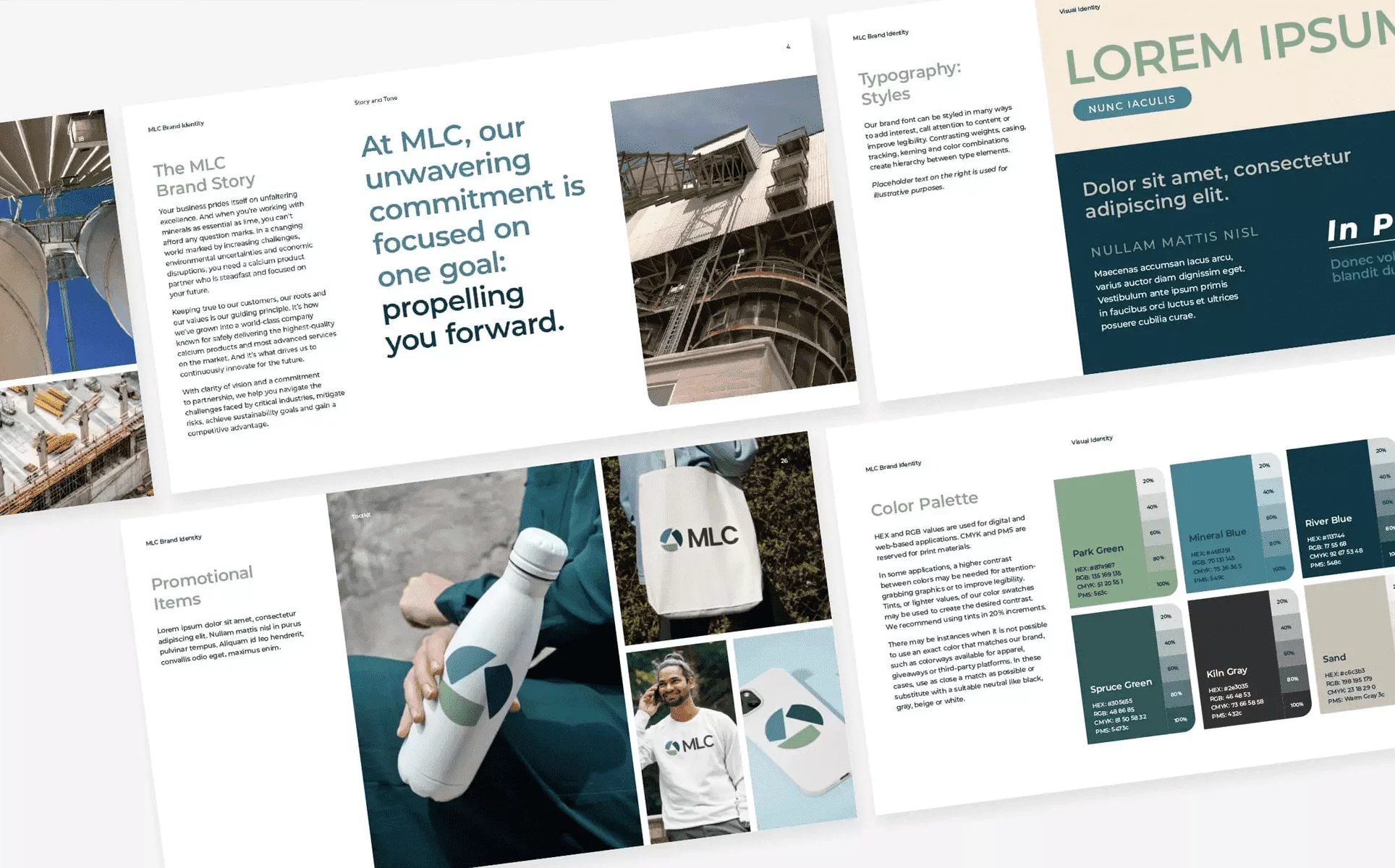Mastering Brand Building in Complex B2B Industries (Part 1)

Building a strong brand in complex B2B industries can feel like an uphill battle. From navigating intricate buying cycles to differentiating your offerings in a crowded market, the challenges are many. However, with a strategic approach, you can carve out a unique space for your brand and stand out from the competition.
In this, the first of our two-part series, we’ll explore how to build a foundation that elevates your brand. Whether you’re a brand manager in life sciences or a marketing VP in manufacturing, this overview will equip you with actionable insights and practical tips. Read on to learn more about understanding your audience, crafting a compelling value proposition, developing a consistent brand identity and measuring success.
Understanding Your Audience
Conduct Market Research
The foundation of any successful B2B brand strategy lies in deep market research. Understanding your audience is crucial for developing effective messaging and positioning your brand appropriately. Start by analyzing industry trends, competitive landscapes and customer behaviors.
Use both primary and secondary research methods to gather comprehensive insights. Surveys, interviews and focus groups can provide valuable qualitative data, while industry reports and market analysis offer quantitative insights. This combination provides a holistic view of your target market and helps pinpoint key opportunities along with potential challenges.
Identify Target Personas
Once you’ve gathered sufficient market data, the next step is to create detailed target personas. These personas represent your ideal customers and will help you tailor messaging and marketing efforts to address their specific needs. It also ensures that your brand resonates with the right people and drives meaningful engagement.
Effective target personas will outline key characteristics, including, but not limited to:
- Demographics: Characteristics such as age, gender and location provide a foundational understanding of who your audience is.
- Job roles: Use this information to grasp the hierarchical structure within target companies, highlighting decision-makers and influencers.
- Buying behaviors: Understanding factors like how they research products, their preferred channels and their decision-making timeline will enable you to craft tailored messaging and marketing strategies.
- Pain points: These are crucial for effective audience connection. Whether pain points are related to time, money or emotion, understanding these allows you to better position your brand as a trusted solution provider able to solve their challenges and offer tangible benefits.
Crafting a Unique Value Proposition
Define Your Brand’s Mission and Vision
A strong brand is built on a clear mission and vision. An effective mission statement articulates the core purpose of your brand: not just what you do — but why you do it. It helps set the stage for fostering authentic relationships built on shared values.
The vision statement is your brand’s North Star. It encapsulates where your brand aims to go and how it plans to impact its industry. An effective vision statement fosters clarity within teams, helping them to understand their role in the bigger picture. What’s more, it can attract and engage customers and partners with similar aspirations.
Together, powerful mission and vision statements serve as guiding principles for your brand strategy and ensure that all marketing efforts align with your overarching goals. They also communicate your brand’s values and aspirations to your audience, fostering trust and credibility.
Differentiate from Competitors
What sets your brand apart? Whether it’s a first-to-market innovation, customer-intimate service or specialized industry expertise, an effective unique selling point will differentiate you from the pack.
Conduct a competitive analysis to understand how your competitors position themselves and identify gaps or opportunities in the market. In addition to gathering information on products, marketing strategies, etc., consider the importance of customer interviews; direct conversations can provide unfiltered insights into preferences and pain points. With this information, you can craft a compelling value proposition that highlights your brand’s distinct advantages and resonates with your target audience.
Articulate Clear Messaging
Clear and concise messaging is essential for effective brand communication. Effective messaging conveys the core benefits of your products or services in a way that’s easily understandable and relatable to your audience. Jargon and complex language can be confusing, so try to avoid it. Instead, focus on the value your brand delivers.
🔍Tips to consider when crafting your message.
Develop a framework that includes key messages, supporting points and proof points. Make it more relevant and impactful by tailoring it to the specific needs and pain points of the target personas you’ve already created. Once the framework is complete, make sure your team and relevant partners are familiar with it so you can reinforce consistency across all marketing channels.
Developing a Consistent Brand Identity
Establish a Brand Concept
We always suggest creating a concept before diving into the more tactical elements of brand building. To us, a concept is a repeatable creative idea that expresses the strategic message. Think of the concept as the creative strategy that:
- Helps ensure consistency across communications and customer interactions
- Guides creative decision-making by providing a clear framework for visuals and copy
- Serves as a creative foundation that grounds a brand as it adapts and evolves
- Differentiates the brand by carving out a distinct identity
By prioritizing brand concept development, you lay the groundwork for cohesive content and campaigns that resonate, eliminating confusion and reinforcing brand recognition.
🎨 Infuse creativity and have fun with concepting — B2B doesn’t have to be boring!
🔦 Check out these tried-and-true questions to ask when you develop a concept.
Design Visual Elements (Logo, Color Palette, Fonts)
Visual branding plays a crucial role in creating a strong brand identity. Your logo, color palette and fonts should reflect your brand’s personality and values. Consistent use of these elements across all touch points creates a cohesive and recognizable brand image.
Since a logo serves as the face of your company, choose one that is both visually appealing and captures your brand’s essence. Color palettes are important, too. Because certain colors evoke specific emotions or associations, select a palette that conveys the right tone and aligns with your industry. Consider fonts carefully as well. You want them to align with your brand’s tone and be easy to read. By maintaining visual consistency, you enhance brand recognition and build trust with your audience.

Establish a Cohesive Brand Voice
Your brand voice is how you communicate with your audience, and it should be consistent across all channels. Whether it’s your website, social media or email marketing, your brand voice should reflect the brand’s personality and values.
Define your brand voice by considering factors such as tone, language and style. For example, if your brand is innovative and forward-thinking, your tone might be optimistic and motivational. If your brand is authoritative and professional, your language might be formal and precise. Uniformity of voice ensures that your messaging is cohesive while reinforcing your brand identity.
Ensure Consistency Across Channels
Building a strong brand is rooted in consistent brand elements and messaging. Ensure this across all marketing channels, including your website, social media profiles, email campaigns, print materials and any other touch points where the brand interacts with the audience.
Develop and share brand guidelines that outline the use of visual elements, tone of voice and messaging to help your team and partners stay aligned with the brand you’re building. Remember, consistency builds trust and credibility, making your brand more recognizable and memorable.
Measuring Success
Establish Key Performance Indicators (KPIs)
Measuring the success of your brand-building efforts is essential for informed decision-making and continual optimization. Early in the brand-building process, establish key performance indicators (KPIs) that align with your business objectives and help track your progress. Common KPIs for brand building include brand awareness, customer engagement, lead generation and conversion rates.
Use analytics tools to monitor KPIs and gain insights into your brand’s performance. By regularly reviewing and analyzing data, you can identify trends, strengths and areas for improvement. This data-driven approach to decision-making ensures that your brand-building strategies are effective and optimized for success.
⚡ How to select the right KPIs.
Assess Brand Health Regularly
Regularly evaluating your brand’s health helps you stay on track and make informed decisions. Brand health surveys can gauge your audience’s perception of your brand by measuring metrics such as brand awareness, brand loyalty and brand sentiment.
Analyze social media mentions, online reviews and customer feedback to gauge market perception of your brand. Use these insights to refine your strategies and address any emerging issues so you can maintain a positive and strong brand image.
Adapt Strategies Based on Insights
The business landscape evolves constantly, and your brand-building strategies should adapt accordingly. Use the insights gathered from your KPIs and brand health assessments to refine and optimize your strategies. As new technologies and approaches emerge, be open to exploring how they can help you elevate your brand.
Stay current with industry trends and best practices to ensure that your brand remains relevant and competitive. Continuously seek feedback from your audience and stakeholders to understand their evolving needs and preferences. Adaptability and agility are key to sustaining a strong brand in a dynamic market.
In this blog post, we shared insights on understanding your audience, crafting a compelling value proposition, developing a consistent brand identity and measuring success. Check out part 2 about mastering B2B brand building in complex industries, where we dive into taking your brand message to market.
Sign Up for our Newsletter - Get agency updates, industry trends and valuable resources delivered directly to you.
Godfrey Team
Godfrey helps complex B2B industries tell their stories in ways that delight their customers.




